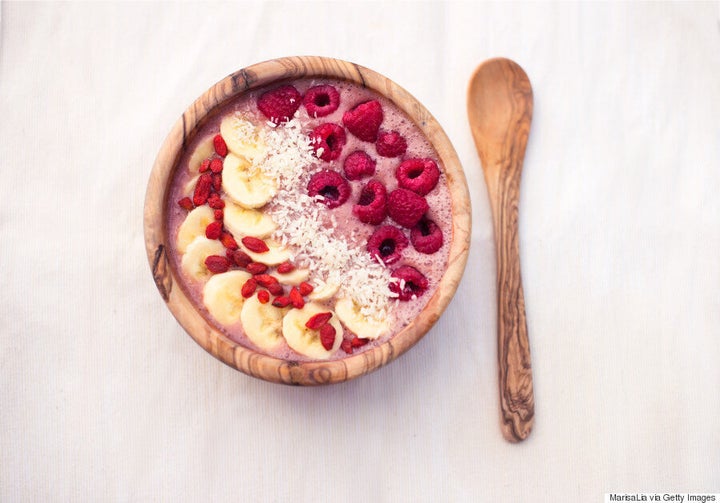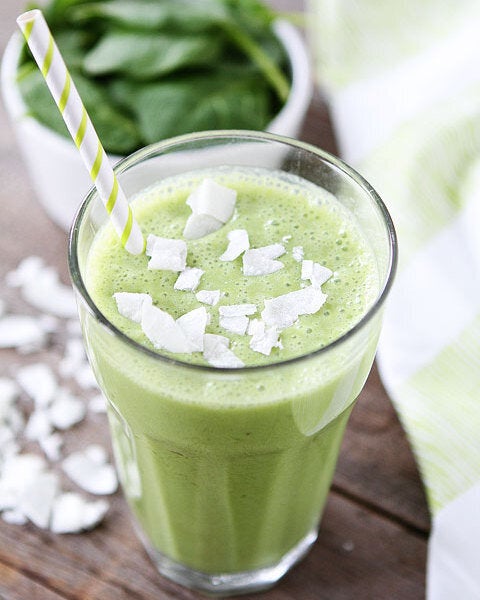Meal replacements were among the top five performers in the consumer-packaged goods category in Canadian grocery stores last year, according to research conducted by Nielsen. And although they get a lot of hype and praise from their devotees, are they everything they're cracked up to be?

Meal replacement shakes definitely offer some benefits. They require little to no effort to prepare, depending on if you buy a powdered version or one that's ready to drink. This makes them great for people who are short on time, or for those who normally skip meals. They may also help with weight loss (more on this later).
On the other hand, they can be used for weight gain and to increase nutrient intake for those who have a reduced appetite, including the elderly and people who are hospitalized (think Ensure shakes). Many meal replacement shakes also contain a good amount of protein and calories for a substantial snack: 175 to 200 calories and about 15 grams of protein per serving is common.
However, the term "meal replacement" is deceiving for many of these products. Numerous shakes are too low in protein and calories to count as a meal on their own. The chocolate Shakeology®, for example, has 17 grams of protein and 160 calories per serving. That wouldn't leave anyone full for long, and wouldn't be enough fuel for a good workout.
"Numerous shakes are too low in protein and calories to count as a meal on their own."
Thirty grams of protein is a good amount to aim for at each meal. "Each" being a key word here. Don't skimp on protein at breakfast and load it on at dinner — especially if you're trying to build or maintain muscle mass. To turn the chocolate Shakeology shake into an actual "meal," add two tablespoons of a nut or seed butter, a cup of milk, some berries and some greens.
Note that cow's milk and soy beverage are the only widely available milk or milk alternative options that are a source of protein. Coconut, almond, oat, rice and other popular milk alternative beverages contain very little.

If you're using meal replacement shakes as a weight loss tool, you're not alone. More than half of Canadians were actively trying to lose weight in 2014, according to a Nielsen report, and 56 per cent were trying to control portions. Portion control is the only reason why meal replacement shakes can be effective in the short term (there is nothing magical about them!). While weight loss may result from consuming a 200-calorie shake for a meal, it's unlikely to result in permanent weight reduction if you don't keep it up for life (and who wants to do that!?).
"No matter how hard we try, we cannot replicate the nutrition provided by a balanced meal."
Recent news about the "Biggest Loser" contestants illustrates this well. Keeping weight off, no matter what method you use, is very challenging. It's not as simple as, "calories in, and calories out." Although, this blog post offers hope that some weight loss can be maintained over the long term.
Dependency on these shakes is also a concern. Do you have a shake as a meal replacement every day? What would happen if the brand you rely on was suddenly discontinued? Many would feel completely lost on what to eat instead or feel that their health was being compromised without it. If you can't go on vacation without your meal replacement shake, I'd encourage you to see a dietitian to come up with some alternative real food options that work for you.
Something else to consider: no matter how hard we try, we cannot replicate the nutrition provided by a balanced meal. There is so much we don't know about the nutrients, phytochemicals, antioxidants, and other components of real food. It always surprises me when I hear people talk about aiming to reduce their ultra-processed food intake as they chug down a meal replacement concoction that is just that — ultra-processed!

Chewing your food is also an important process that can help with satiety. If you love smoothies, trendy smoothie bowls are a great option to slow down your intake and give your brain some time to register that you are full. Meal replacement shakes require little digestion and are quickly absorbed. Eating real food will always be superior.
These shakes are also expensive. Food budgets are stretched for most families and individuals, especially this year. And many shakes work out to well over $6 per serving. That's a lot of money for 160 calories and a snack's worth of protein.
Advocates may argue that the added vitamins, minerals, "superfoods" and other mystery ingredients added to many meal replacement powders and shakes justify this cost. However, considering it's possible to eat a nutritious meal for less than the cost of the average shake, I would disagree. (Check out this article for a full day's meal plan that I costed out for just over $5).
Overall, it's important to make time for meals and to enjoy real food. However, a meal replacement shake at times may be a good option for you. Talk to a registered dietitian to see what makes the most sense considering your circumstances. Dietitians are the most trusted source of nutrition advice; they have years of education and training to inform their practice and guidance. Want to find a dietitian in your area? Use the "find a dietitian" service on the Dietitians of Canada website.

Melissa Baker is a registered dietitian with a masters degree in nutrition communication. She loves being a part of the exciting nutrition world, and helping to improve the health and quality of life of Canadians. Every month, Melissa examines nutrition trends in her HuffPost Canada Living franchise, "What's The Deal?" For more from Melissa, check out her blog Upbeet.ca.
Also on HuffPost
